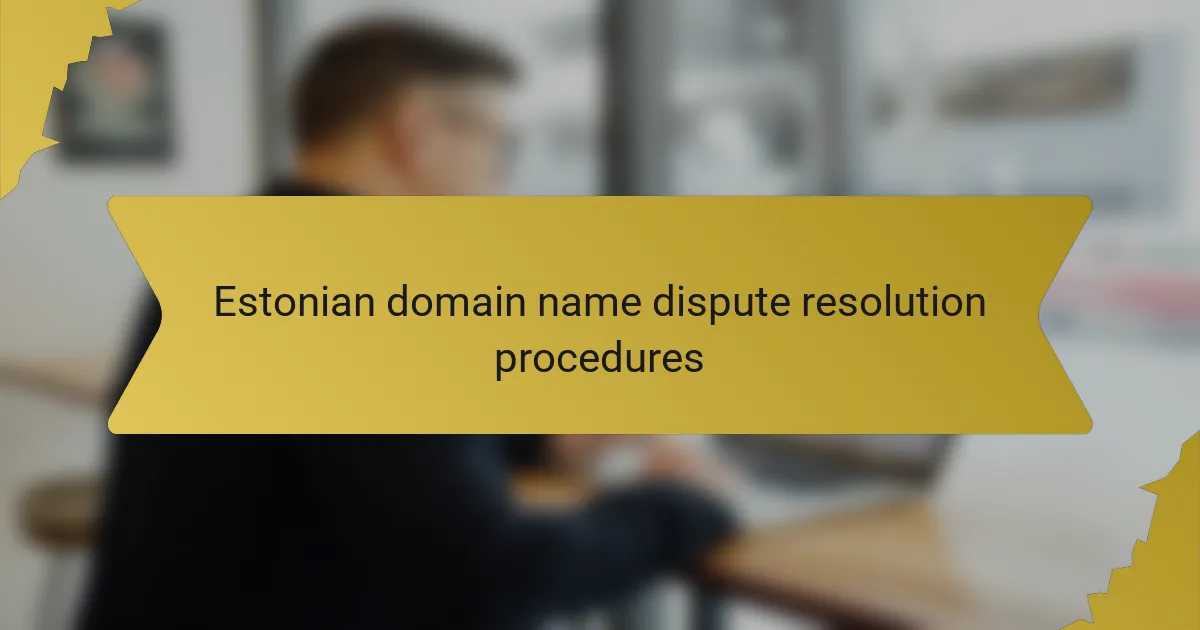The Estonian domain name dispute resolution procedures offer a systematic approach for addressing conflicts related to domain names registered in Estonia. These procedures aim to resolve issues such as bad faith registrations and trademark infringements in a fair and efficient manner.
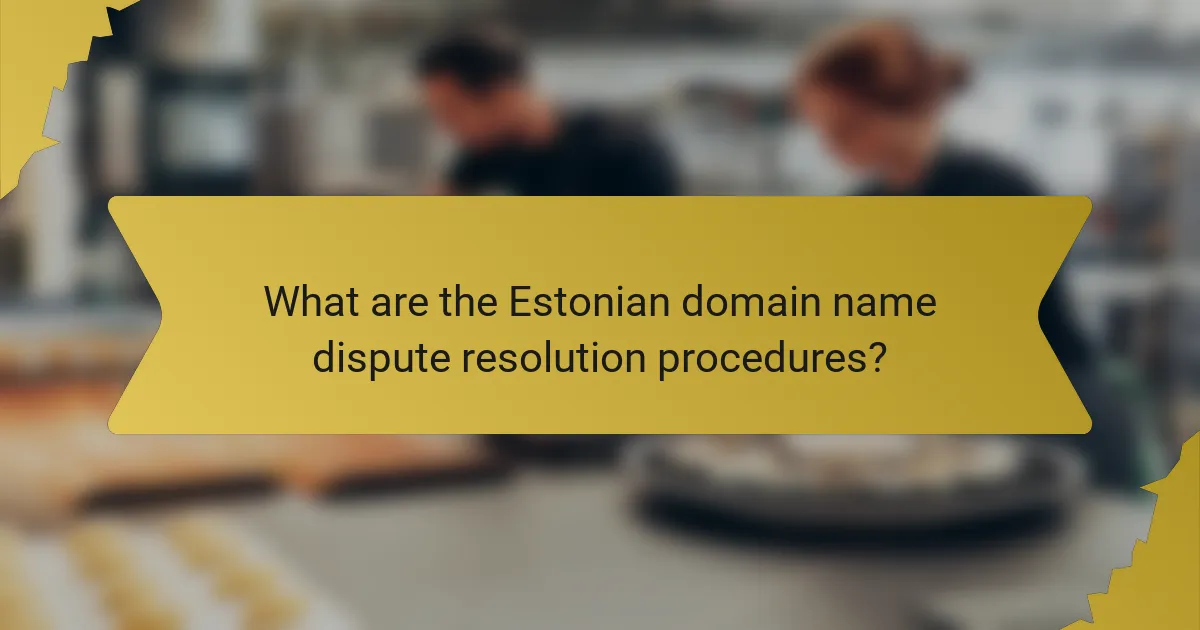
What are the Estonian domain name dispute resolution procedures?
The Estonian domain name dispute resolution procedures provide a structured method for resolving conflicts over domain names registered in Estonia. These procedures are designed to address issues such as bad faith registrations and trademark infringements efficiently and fairly.
Estonian Domain Name Dispute Resolution Policy
The Estonian Domain Name Dispute Resolution Policy outlines the framework for resolving disputes related to .ee domain names. It is based on principles similar to those found in international standards, such as the Uniform Domain Name Dispute Resolution Policy (UDRP). This policy emphasizes the protection of intellectual property rights and aims to prevent the misuse of domain names.
Under this policy, a complainant must demonstrate that the domain name in question is identical or confusingly similar to a trademark or service mark in which they have rights, that the registrant has no legitimate interests in the domain, and that the domain was registered and is being used in bad faith.
Steps in the dispute resolution process
The dispute resolution process typically involves several key steps. First, the complainant files a formal complaint with an accredited dispute resolution provider, detailing their claims and supporting evidence. The provider then notifies the domain name registrant and allows them to respond within a specified timeframe, usually around 20 days.
After receiving both parties’ submissions, the dispute resolution provider will appoint a panel of experts to review the case. The panel will issue a decision based on the evidence presented, which can result in the transfer of the domain name to the complainant or a dismissal of the complaint. The entire process usually takes a few weeks to a couple of months, depending on the complexity of the case.
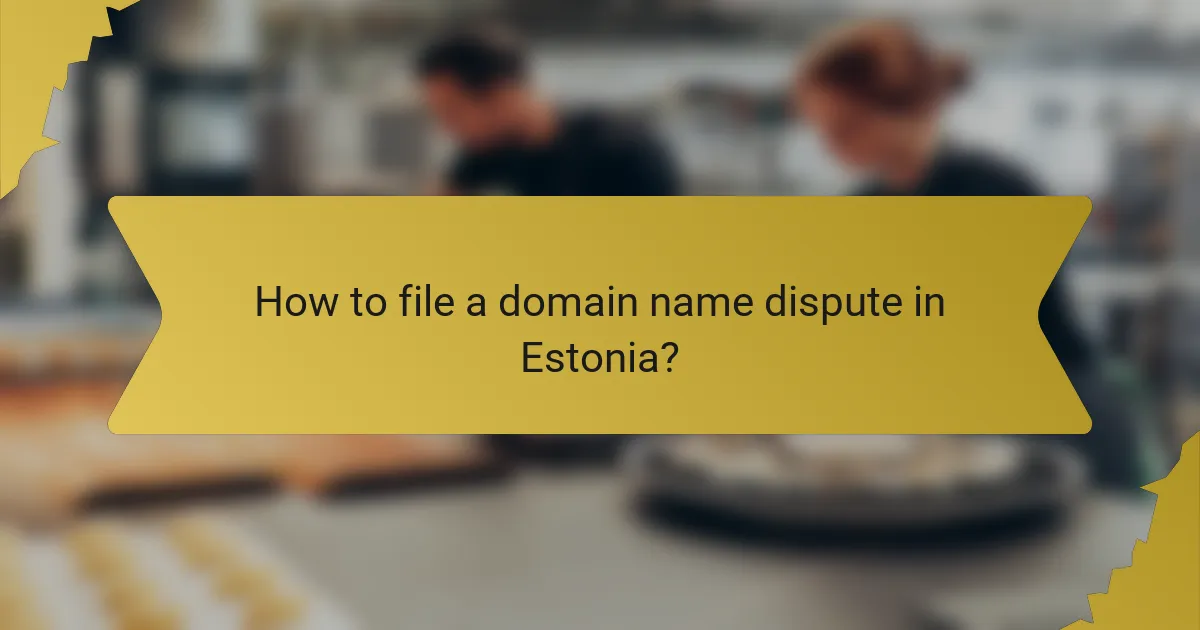
How to file a domain name dispute in Estonia?
To file a domain name dispute in Estonia, you must submit your complaint to the Estonian Domain Name Dispute Resolution Policy (EDRDP) provider. The process involves specific eligibility criteria and required documentation to ensure your case is valid and properly addressed.
Eligibility criteria for filing
To be eligible to file a domain name dispute in Estonia, you must demonstrate a legitimate interest in the domain name in question. This typically means you have a registered trademark or a business name that is identical or similar to the domain.
Additionally, the domain name must be registered under the .ee country code top-level domain (ccTLD). If you are an individual or entity from outside Estonia, you may also need to show a connection to Estonia, such as a business presence or trademark registration within the country.
Required documentation for filing
When filing a domain name dispute, you need to provide several key documents. These typically include proof of your trademark registration or business name, evidence of your rights to the name, and any correspondence related to the domain registration.
It is also advisable to include a detailed statement outlining your claims and the reasons for the dispute. Ensure that all documents are in Estonian or accompanied by certified translations to facilitate the review process.
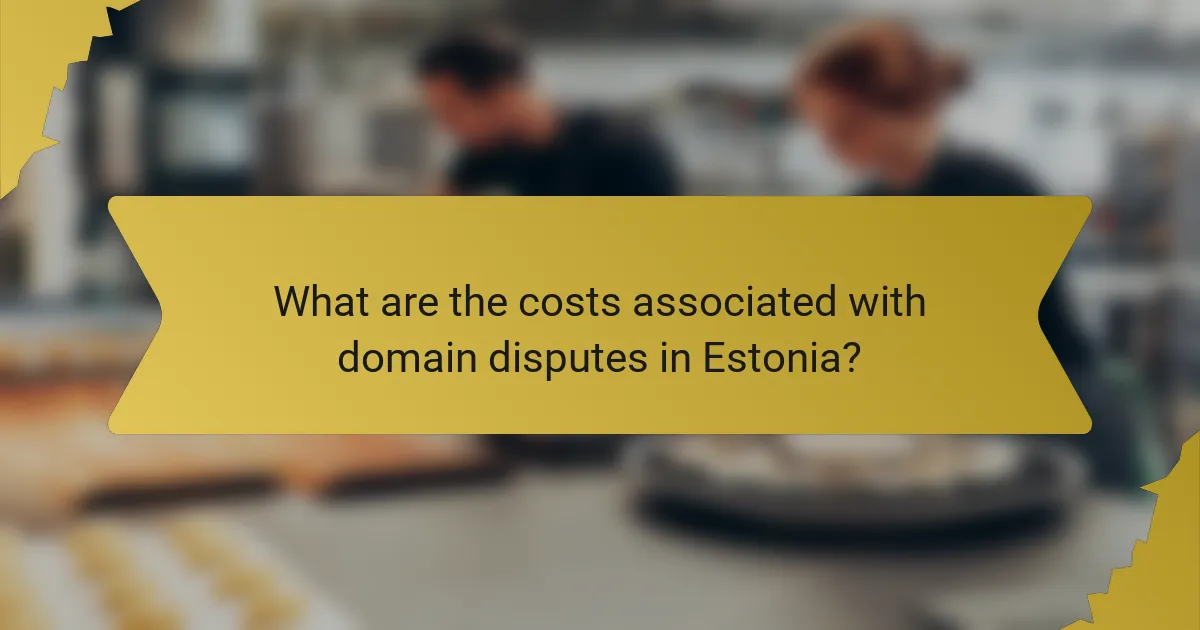
What are the costs associated with domain disputes in Estonia?
The costs associated with domain disputes in Estonia can vary significantly based on several factors, including the complexity of the case and the chosen resolution method. Generally, parties should anticipate both filing fees and potential additional costs throughout the resolution process.
Filing fees for disputes
Filing fees for domain disputes in Estonia typically range from approximately €200 to €500, depending on the specific dispute resolution provider. This fee is usually paid at the time of filing the complaint and is non-refundable, regardless of the outcome.
It’s essential to check the specific rules of the dispute resolution provider you choose, as fees may differ. Some providers may also offer expedited services for an additional charge, which could be beneficial if a quick resolution is needed.
Additional costs during the resolution process
In addition to the initial filing fees, parties involved in domain disputes may incur various additional costs. These can include legal fees if you choose to hire an attorney, which can vary widely based on their experience and the complexity of the case.
Other potential costs include administrative fees charged by the dispute resolution provider for document handling and communication. It’s advisable to budget for these expenses, as they can add up quickly, especially in more complex cases.
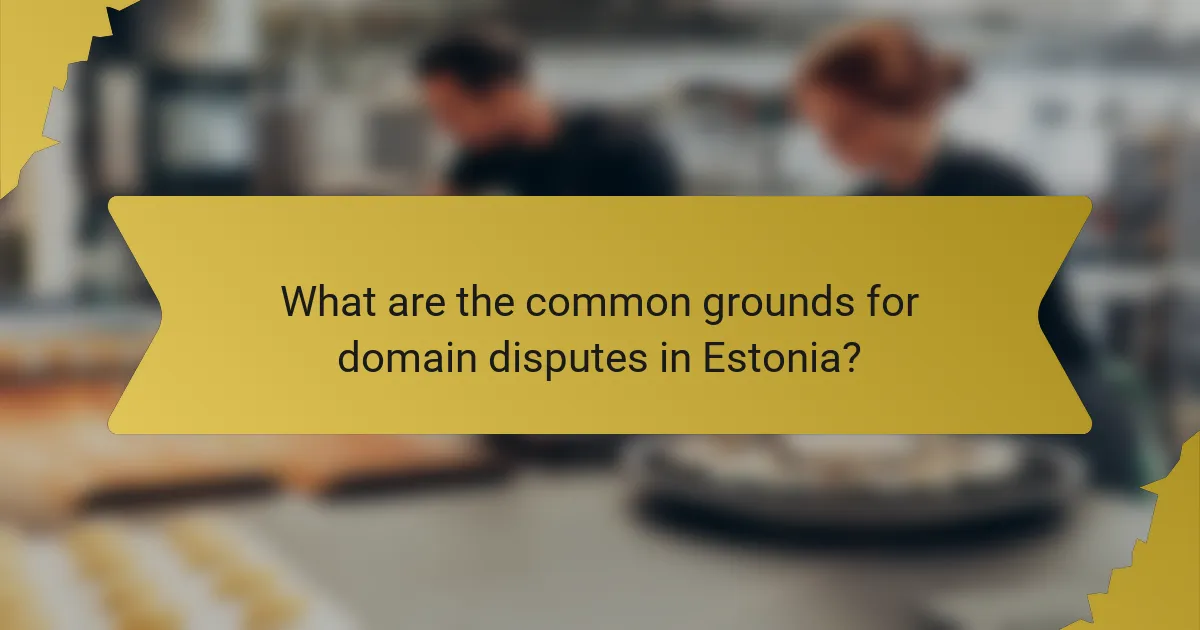
What are the common grounds for domain disputes in Estonia?
Common grounds for domain disputes in Estonia primarily include trademark infringement and bad faith registration. These issues arise when a domain name conflicts with existing trademarks or is registered with malicious intent, impacting the rights of legitimate trademark holders.
Trademark infringement
Trademark infringement occurs when a domain name closely resembles a registered trademark, leading to confusion among consumers. In Estonia, the law protects trademark owners by allowing them to challenge domain registrations that violate their rights.
To establish a case of trademark infringement, the trademark owner must demonstrate that their mark is well-known and that the domain name in question is likely to cause confusion. This often involves comparing the similarity of the names and the goods or services associated with them.
Bad faith registration
Bad faith registration refers to the practice of registering a domain name with the intent to profit from the goodwill of a trademark or to disrupt a competitor’s business. In Estonia, this can include registering domains that are identical or confusingly similar to established trademarks without legitimate reasons.
To prove bad faith, the complainant should provide evidence of the registrant’s intent, such as prior knowledge of the trademark or attempts to sell the domain at an inflated price. Common pitfalls include failing to document communication with the registrant or not acting promptly after discovering the registration.

How to appeal a domain name dispute decision in Estonia?
To appeal a domain name dispute decision in Estonia, you must file your appeal with the appropriate authority within a specified timeframe. This process involves presenting valid grounds for your appeal and adhering to the established procedures.
Grounds for appeal
Common grounds for appealing a domain name dispute decision in Estonia include procedural errors, misinterpretation of facts, or violations of applicable regulations. If you believe the decision was unjust or based on incorrect information, you can challenge it.
Additionally, you may appeal if new evidence emerges that could significantly impact the case. Ensure that your appeal clearly outlines these grounds to strengthen your position.
Process for submitting an appeal
The appeal process in Estonia typically requires you to submit a written appeal to the relevant authority, such as the Estonian Internet Foundation. This submission should include your contact information, details of the original dispute, and the specific grounds for your appeal.
It is crucial to adhere to the deadline for filing your appeal, which is usually set within a few weeks of the original decision. Be prepared to pay any applicable fees associated with the appeal process, which can vary based on the authority handling the case.
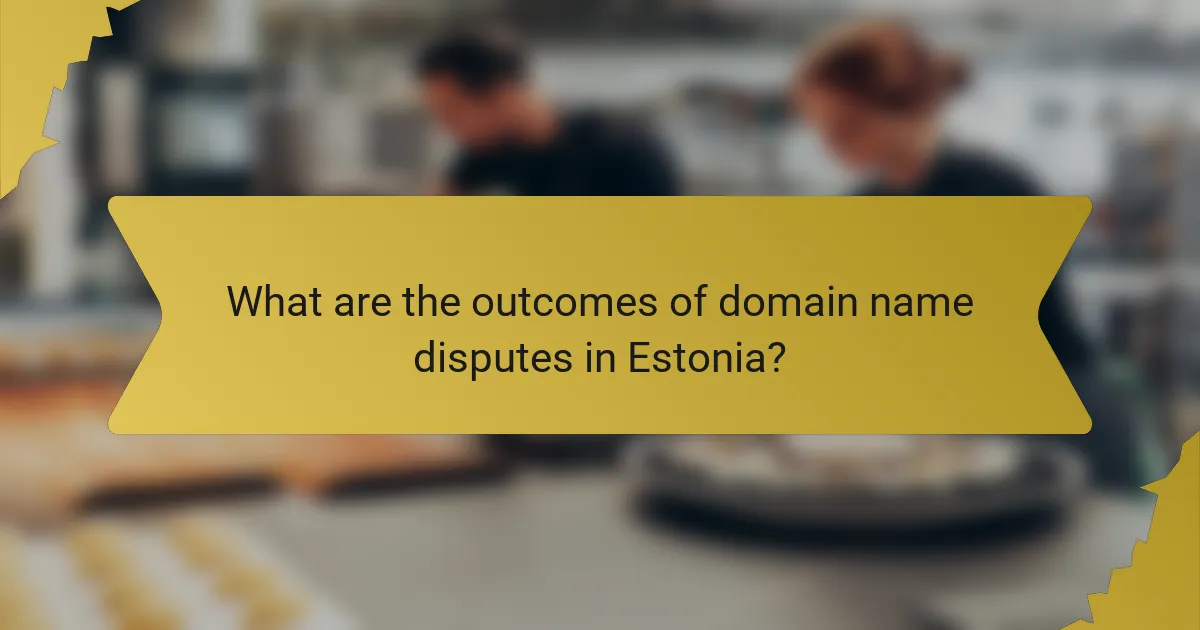
What are the outcomes of domain name disputes in Estonia?
In Estonia, domain name disputes can lead to two primary outcomes: transfer of domain ownership or cancellation of domain registration. The resolution process typically involves arbitration or mediation, guided by the Estonian Domain Name Dispute Resolution Policy.
Transfer of domain ownership
Transfer of domain ownership occurs when a dispute is resolved in favor of the complainant, who can demonstrate rights to the domain name. This process often involves submitting evidence of trademark rights or prior use of the name.
Once a decision is made, the domain registrar will facilitate the transfer, which may take a few days to complete. It’s crucial for both parties to understand that the transfer process is legally binding and must be adhered to by the losing party.
Cancellation of domain registration
Cancellation of domain registration is another possible outcome when the domain is found to be registered in bad faith or violates trademark rights. This decision can be made if the complainant provides sufficient proof of their claims.
In Estonia, if a domain is canceled, it typically becomes available for re-registration after a short grace period. Parties involved should be aware of the implications of cancellation, including potential loss of business reputation and online presence.

What are the best practices for avoiding domain disputes in Estonia?
To avoid domain disputes in Estonia, it is essential to conduct thorough trademark searches and register domains proactively. These practices help ensure that your domain name does not infringe on existing trademarks and that you secure your desired domain before others can claim it.
Conducting thorough trademark searches
Before registering a domain, perform comprehensive trademark searches to identify any existing trademarks that may conflict with your chosen domain name. This process involves checking the Estonian Patent Office’s trademark database and other relevant resources to ensure that your domain does not infringe on someone else’s rights.
Consider using professional services or legal advice to navigate trademark laws effectively. This can help you avoid costly disputes and potential legal challenges in the future. Remember, even if a domain is available, it may still violate trademark rights.
Registering domains proactively
Proactively registering your desired domain names can significantly reduce the risk of disputes. If you have a business name or brand, secure the corresponding domain as soon as possible to prevent others from claiming it. This is especially important in a competitive market like Estonia.
Additionally, consider registering variations of your domain name, including different extensions (e.g., .ee, .com) and common misspellings. This strategy helps protect your brand and ensures that customers can easily find you online, reducing the likelihood of confusion and disputes.
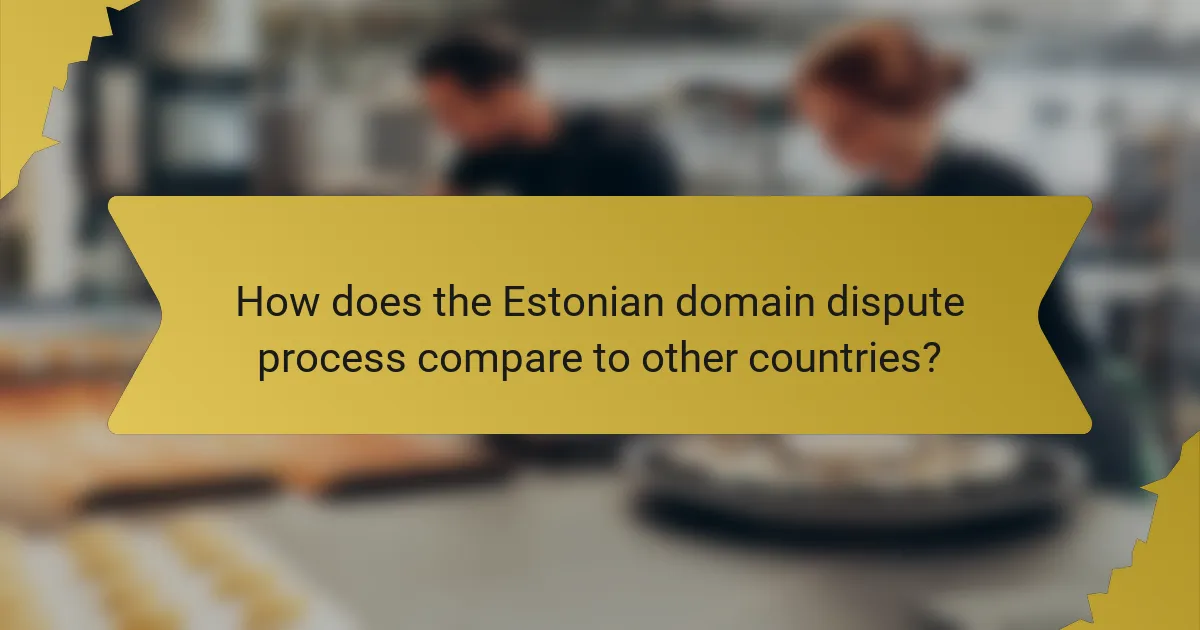
How does the Estonian domain dispute process compare to other countries?
The Estonian domain dispute process is generally streamlined and efficient, often resembling procedures in other EU nations. It emphasizes rapid resolution and adherence to established regulations, making it user-friendly for both local and international parties.
Comparison with EU domain dispute procedures
Estonia’s domain dispute resolution aligns closely with the EU’s framework, particularly the Uniform Domain Name Dispute Resolution Policy (UDRP). Both systems prioritize quick resolutions, typically aiming for decisions within a few months.
In Estonia, disputes are usually handled by the Estonian Internet Foundation, while in the broader EU context, various accredited bodies manage cases. This can lead to slight variations in procedural specifics, such as filing fees and documentation requirements.
For instance, while UDRP fees can range from a few hundred to over a thousand euros depending on the provider, Estonian fees are often more modest, typically around 200 to 300 euros. Parties should be aware of these differences when choosing where to file their disputes.
